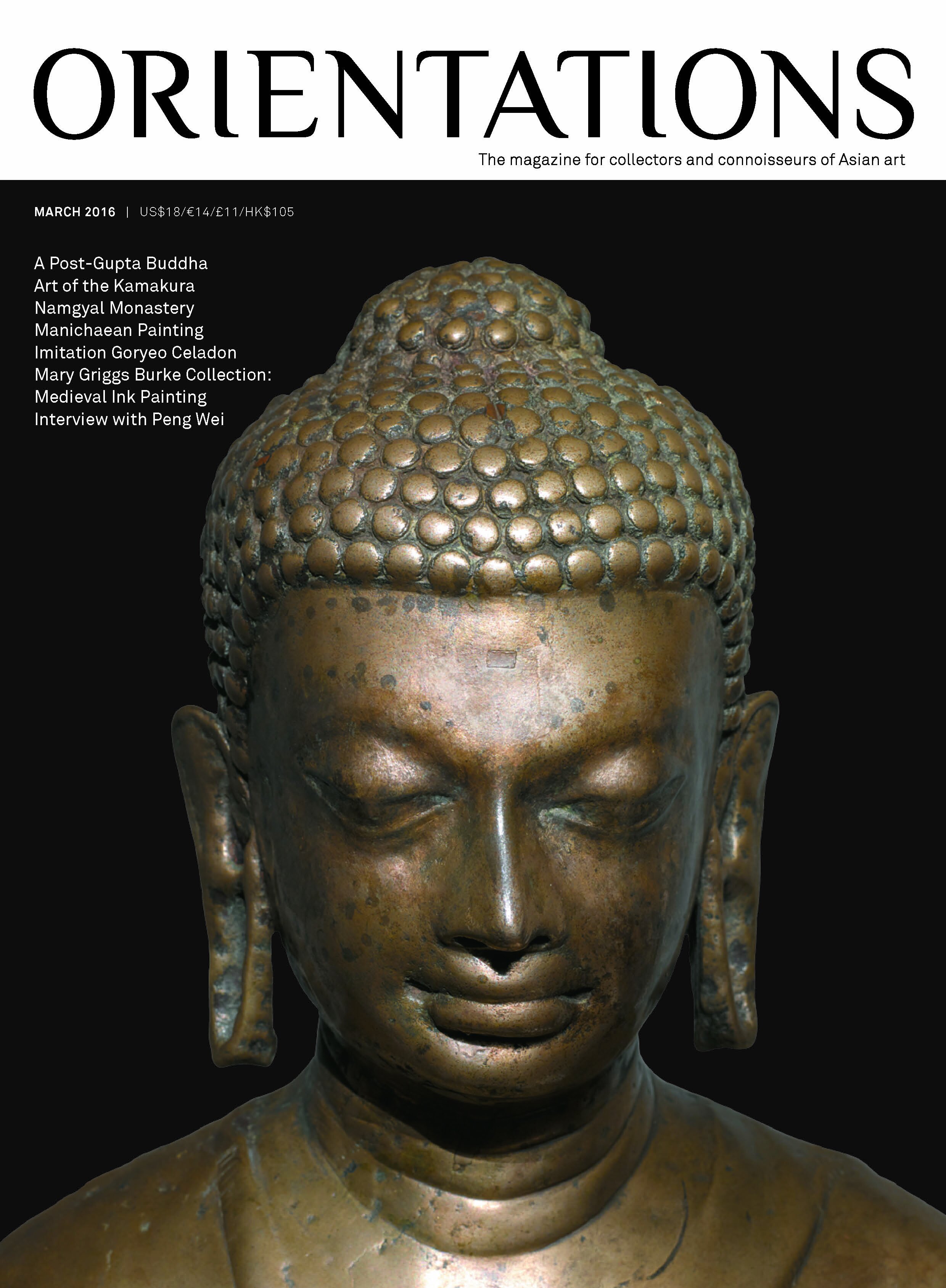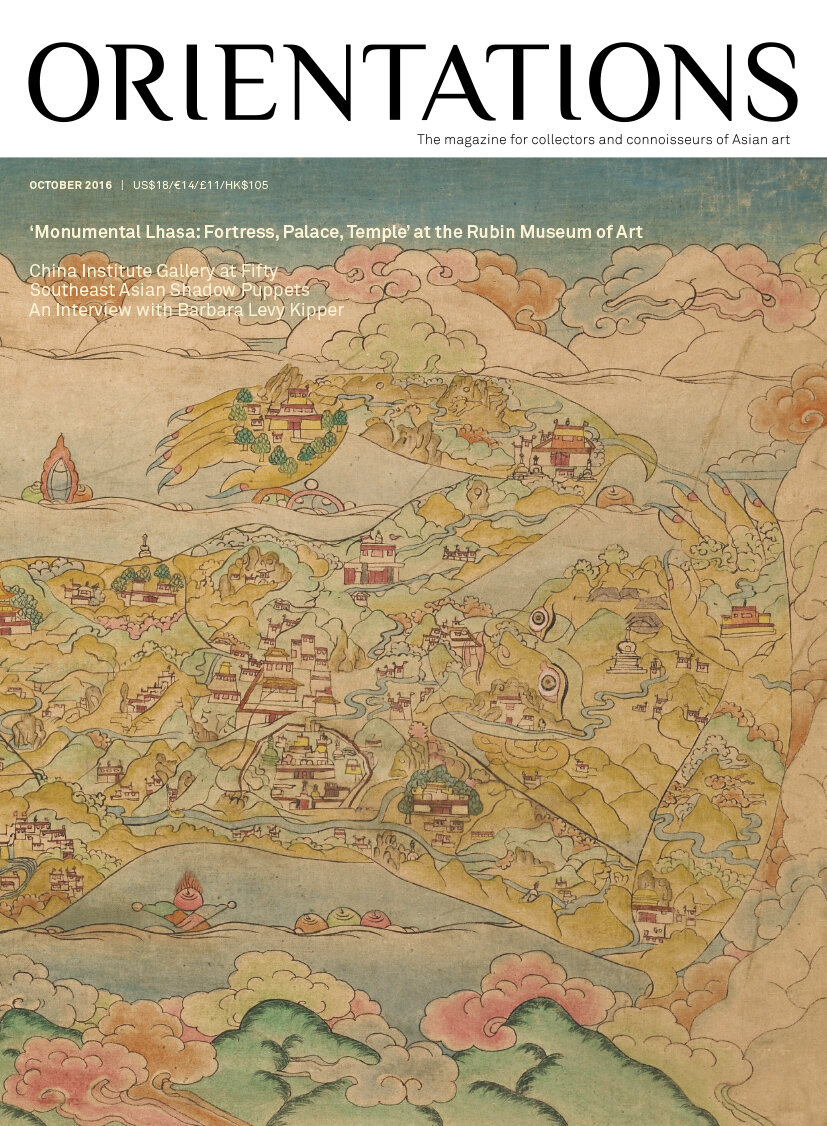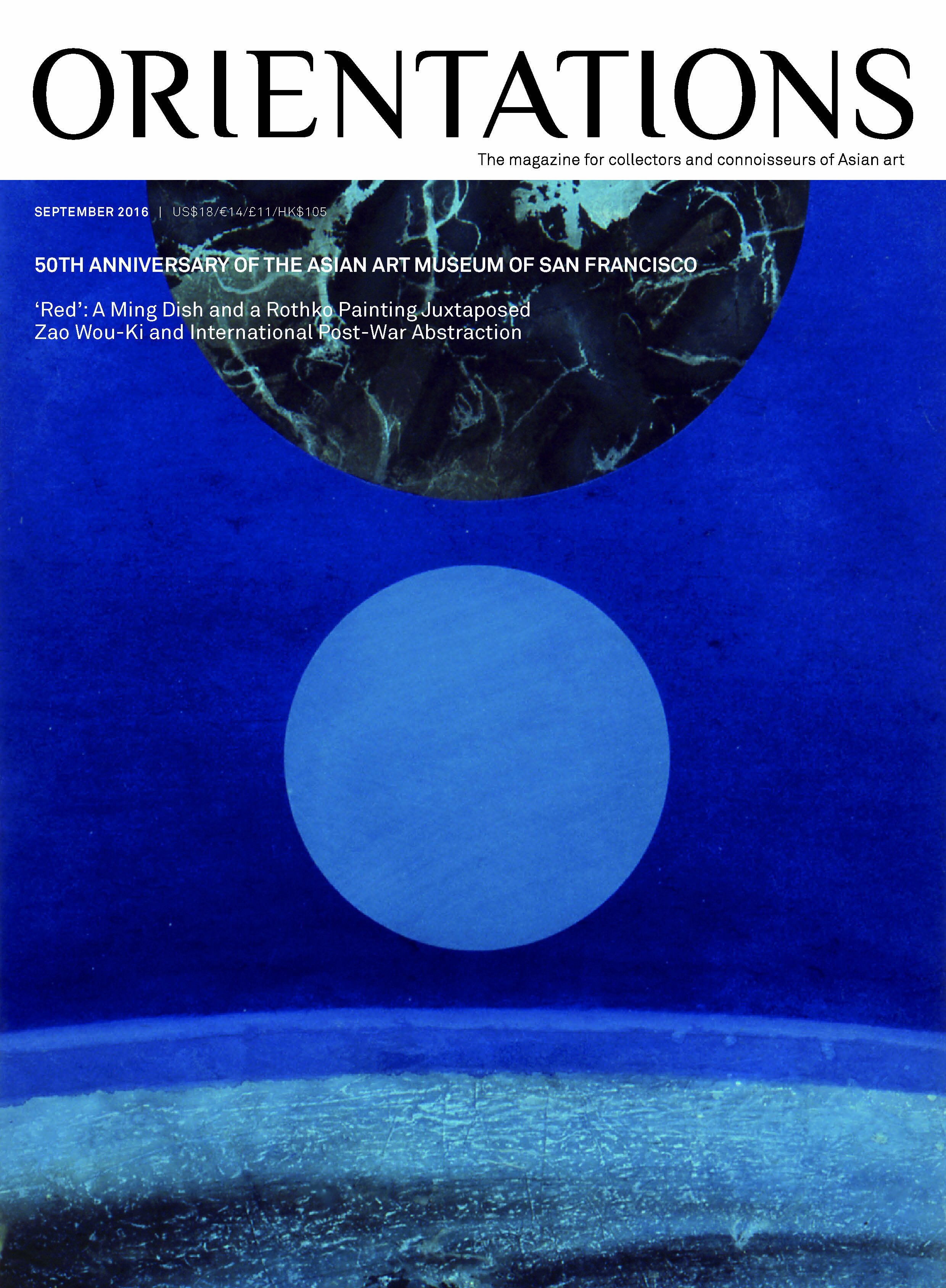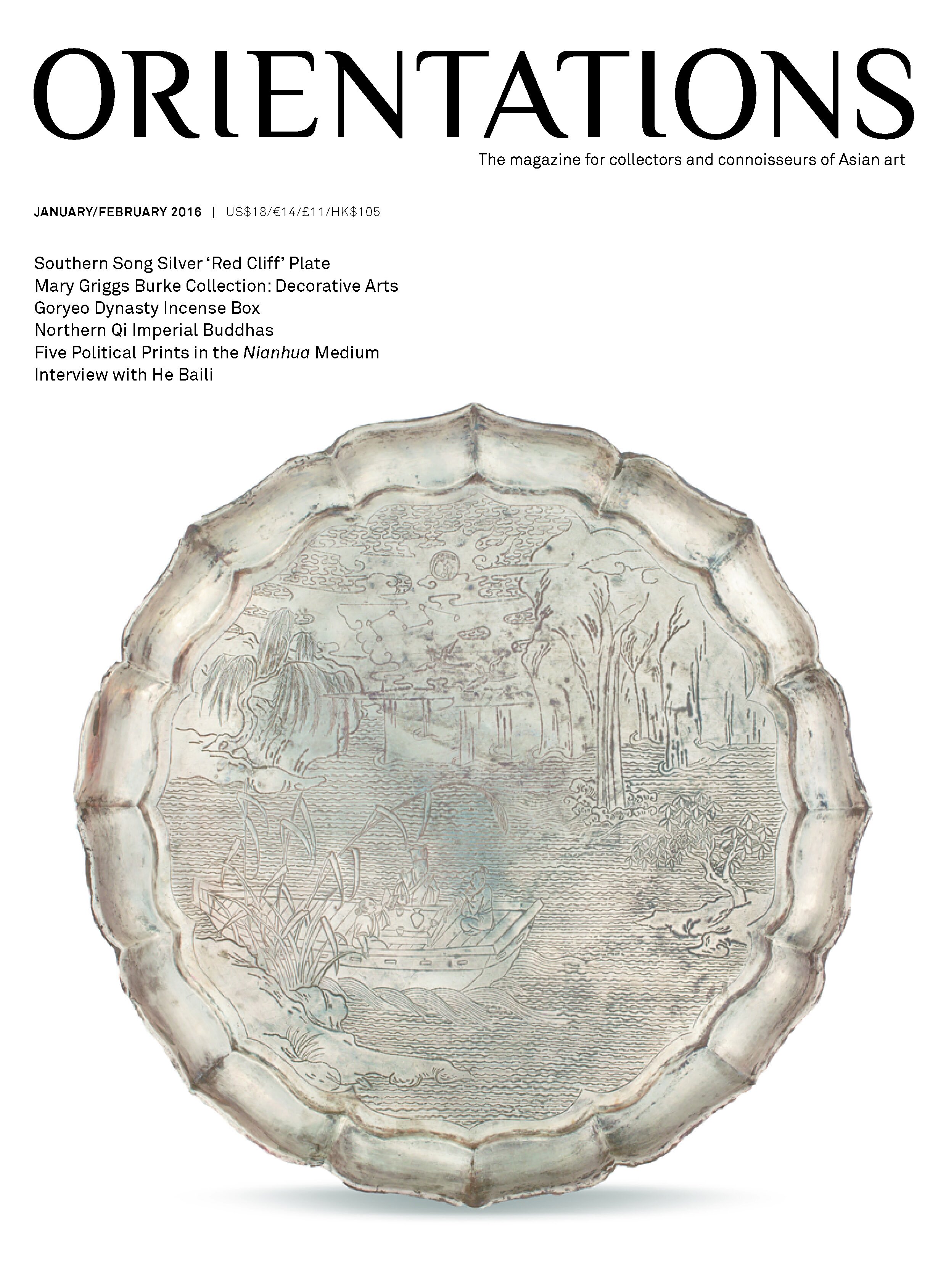 Image 1 of 1
Image 1 of 1


MAR 2016
VOLUME 47 - NUMBER 2
Fresh perspectives and hidden treasures are revealed in our first issue of the spring season. John Guy takes a closer look at a post-Gupta Buddha, one of the largest extant Indian medieval metal Buddhist icons, and investigates how it survived through the centuries. Adriana Proser invites us to appreciate the outer beauty of Kamakura Buddhist sculpture and to consider what is concealed beneath the surface. Christian Luczanits’ recent fieldwork in Mustang uncovered an extraordinary collection of portable Buddhist images, which, as he explains, mirror the history of the remote region and its connections with the western Himalayas, the Kathmandu valley and the Sakya school.
Following on from our November/December 2015 issue on imitation ceramics, Jung Eunjin’s research into early 20th century reproductions of Goryeo celadon augments our understanding of the phenomenon in Korea. Miki Morita’s analysis of a 14th century Buddhist mandala points to its possible Manichaean origins, providing new clues as to the practice of Manichaeism in southern China.
And in the third article in our series on the Burke Collection, Aaron Rio looks at a small but important selection of medieval ink paintings, now gifted to the Metropolitan Museum and Minneapolis Institute of Arts. In Beijing, Tiffany Wai-Ying Beres meets contemporary artist Peng Wei to talk about her artistic practice and collecting interests. Rounding up the issue, Tianlong Jiao looks back over a century of Asian art collecting at Denver Art Museum.
FEATURES
John Guy. Parading the Buddha in the Post-Gupta Age: A Newly Discovered Masterpiece of Indian Bronze Sculpture
Adriana Proser. Kamakura: Realism and Spirituality in the Sculpture of Japan
Christian Luczanits. Portable Heritage in the Himalayas - The Example of Namgyal Monastery, Mustang: Part I, Sculpture
Jung Eunjin. The Imitation Game: Reproductions of Goryeo Celadon in the 20th Century
Miki Morita. Piecing a Picture Together: A New Manichaean Perspective on a Chinese Religious Painting in the Asian Art Museum of San Francisco
Aaron M. Rio. Medieval Japanese Ink Paintings: From the Burke Collections at the Minneapolis Institute of Art and Metropolitan Museum of Art
PREVIEWS & REVIEWS
Anthony Wu. Exhibition Review: ‘The Radiant Ming 1368–1644 through the Min Chiu Society Collection’
Spring Events in New York
TEFAF Maastricht 2016
Hong Kong Art Fairs
INTERVIEWS
Timeless Beauty: Peng Wei the Collector
NEWS
Yoshiko Kakudo (1934–2016)
COMMENTARY
Tianlong Jiao. A Centennial Journey: Collecting Asian Art at the Denver Art Museum
VOLUME 47 - NUMBER 2
Fresh perspectives and hidden treasures are revealed in our first issue of the spring season. John Guy takes a closer look at a post-Gupta Buddha, one of the largest extant Indian medieval metal Buddhist icons, and investigates how it survived through the centuries. Adriana Proser invites us to appreciate the outer beauty of Kamakura Buddhist sculpture and to consider what is concealed beneath the surface. Christian Luczanits’ recent fieldwork in Mustang uncovered an extraordinary collection of portable Buddhist images, which, as he explains, mirror the history of the remote region and its connections with the western Himalayas, the Kathmandu valley and the Sakya school.
Following on from our November/December 2015 issue on imitation ceramics, Jung Eunjin’s research into early 20th century reproductions of Goryeo celadon augments our understanding of the phenomenon in Korea. Miki Morita’s analysis of a 14th century Buddhist mandala points to its possible Manichaean origins, providing new clues as to the practice of Manichaeism in southern China.
And in the third article in our series on the Burke Collection, Aaron Rio looks at a small but important selection of medieval ink paintings, now gifted to the Metropolitan Museum and Minneapolis Institute of Arts. In Beijing, Tiffany Wai-Ying Beres meets contemporary artist Peng Wei to talk about her artistic practice and collecting interests. Rounding up the issue, Tianlong Jiao looks back over a century of Asian art collecting at Denver Art Museum.
FEATURES
John Guy. Parading the Buddha in the Post-Gupta Age: A Newly Discovered Masterpiece of Indian Bronze Sculpture
Adriana Proser. Kamakura: Realism and Spirituality in the Sculpture of Japan
Christian Luczanits. Portable Heritage in the Himalayas - The Example of Namgyal Monastery, Mustang: Part I, Sculpture
Jung Eunjin. The Imitation Game: Reproductions of Goryeo Celadon in the 20th Century
Miki Morita. Piecing a Picture Together: A New Manichaean Perspective on a Chinese Religious Painting in the Asian Art Museum of San Francisco
Aaron M. Rio. Medieval Japanese Ink Paintings: From the Burke Collections at the Minneapolis Institute of Art and Metropolitan Museum of Art
PREVIEWS & REVIEWS
Anthony Wu. Exhibition Review: ‘The Radiant Ming 1368–1644 through the Min Chiu Society Collection’
Spring Events in New York
TEFAF Maastricht 2016
Hong Kong Art Fairs
INTERVIEWS
Timeless Beauty: Peng Wei the Collector
NEWS
Yoshiko Kakudo (1934–2016)
COMMENTARY
Tianlong Jiao. A Centennial Journey: Collecting Asian Art at the Denver Art Museum





